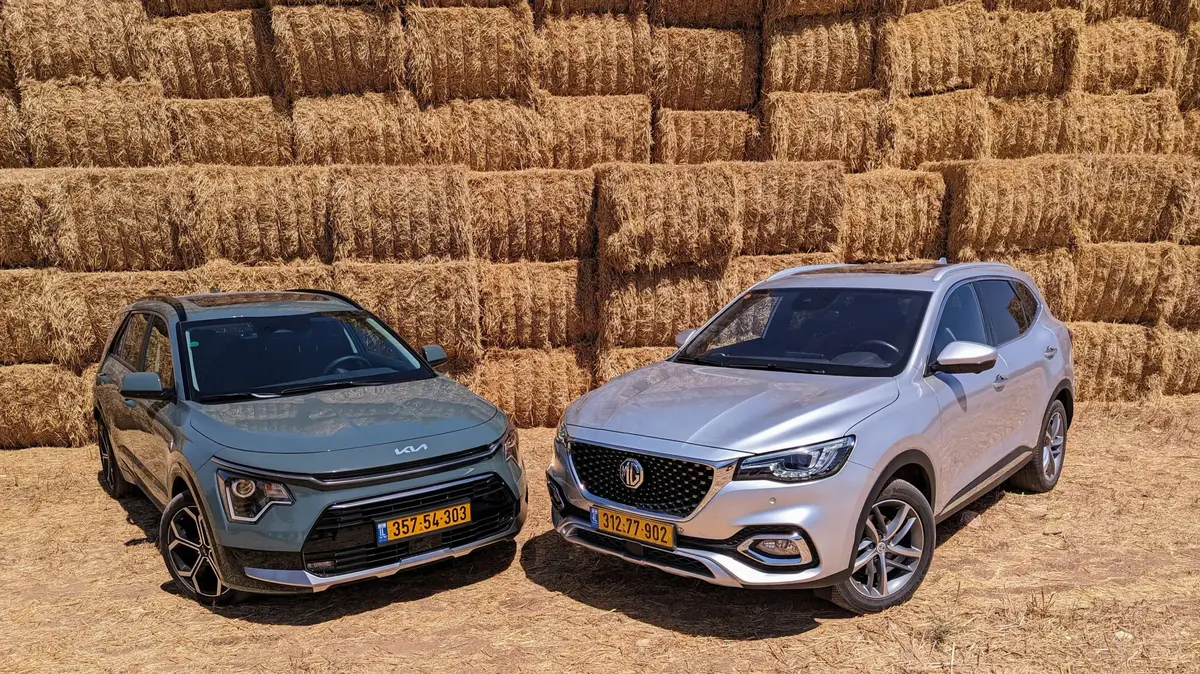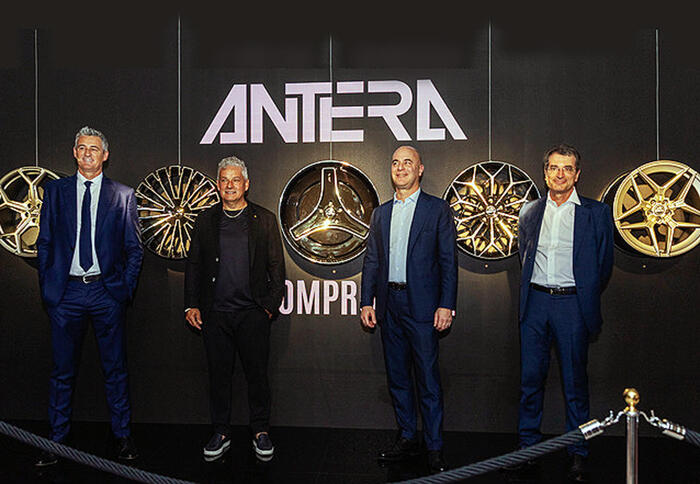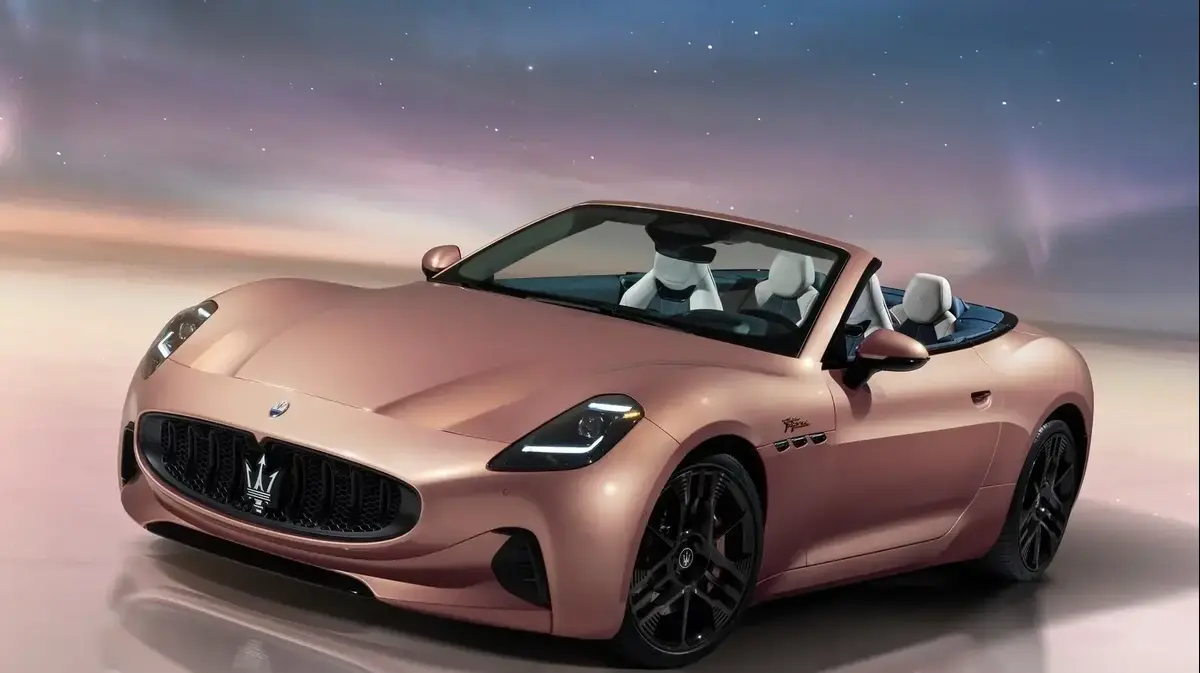Enlarge image
Consistent in the compromise: Kia Niro EV
Photo:
Thorsten Weigl / Kia
The first impression:
Command clear edge: Compact SUVs are a dime a dozen.
If the Kia Niro didn't have that idiosyncratic C-pillar, emphasized by the designers with a contrasting color, it would get completely lost in this crowd.
But this angular boomerang on the side not only wants to be an eye-catcher, it also has a functional aspect: Because the sheet metal protrudes a little and is open at the back, it directs the airflow close to the bodywork.
This lowers air resistance, lowers consumption and increases range.
If you don't like the color spot, you can of course also get the sheet metal in a subtle body color.
That's what the manufacturer says:
freedom of choice!
"With the Niro as a hybrid, plug-in and electric car, we offer every customer the right entry into electromobility," says product manager Gregor Krumboeck.
He justifies the parallel existence of three different drives, for which Kia has modified the so-called K-platform.
At first glance, however, the Niro is a step backwards.
In the industry, the trend is towards cars developed on so-called skateboard platforms for battery drives.
Multi-energy models such as the Kia Niro, also used by the Stellantis Group for Opel Mokka or Peugeot 308, are considered to be compromised.
Kia already has the EV6 on offer, which is based on the purely electric E-GMP skateboard.
With a charging capacity of 800 volts, the Korean platform is even superior to the MEB models of the VW Group, and currently only has to fear competition from Porsche and Audi.
Niro Manager Krumboeck also sees the EV6 as a figurehead and technological pioneer.
However, the product manager argues that a compact and, above all, reasonably affordable car cannot yet be presented on this platform.
For small prices you need large quantities, to which the combustion engines would have to contribute their part.
On top of that, this solution offers the necessary flexibility to react to the fluctuating demand for electric cars or hybrids in the different markets.
The Niro is not a worse, less up-to-date car, rather it adopts numerous tried-and-tested details of the EV6.
A compromise on the part of the manufacturer so that customers have to make as few compromises as possible.
We noticed that
the story with the prices does have a catch: the electric Niro is only available in the top version, which is even more expensive than the cheapest, comparatively bare EV6.
But at least when it came to the compromises that were avoided, Krumboeck apparently didn't talk too much.
Because the Niro EV is not only reminiscent of its big brother on the inside: a high proportion of recycling material, a digital cockpit with a double sensor bar - Kia's answer to Apple's touch bar.
There are hardly any differences in the drive either: unlike many a solitary electric car, the converted Niro is capable of bidirectional charging, for example, with which stored electricity from the car battery can also be released again.
A special adapter can be used to get an e-bike going again, supply the electric pump for the SUP board at the quarry lake or fire up the camping grill.
Because lithium-ion cells also have a comfort zone in which they offer better charging performance, the battery of the EV can be pre-conditioned if desired.
This is also something that is sometimes not possible with supposedly more consistent competitors.
When driving, the differences between e-cars are blurred anyway.
The Niro is also whisper-quiet.
With its 150 kW electric motor, it accelerates so spontaneously that the front wheels sometimes squeak during kickdown.
And of course there are several recuperation levels and an intelligent accelerator pedal, with which you can either coast endlessly or studiously ignore the brake pedal.
And like almost every e-car, the Niro is slowed down much too early in the eyes of some petrolheads.
More than 167 km / h are not possible.
A sophisticated electric drive, a battery that the driver can precondition or tap into with an adapter for other consumers such as an e-bike, different driving programs and powerful recuperation - as far as the drive is concerned, the Niro is actually in no way inferior to the EV .
And because the battery is smaller and consumption is lower, you can make ends meet with just under 80 KW charging power.
Only the space available is a bit worse compared to dedicated battery cars, because Kia still has to reserve space for a combustion engine in the front, which allows for a less generous wheelbase.
But because the new stainless steel has been stretched by at least seven centimeters to 4.42 meters and the distance between the axles has also increased by two centimetres, it is still a bit more spacious at the rear.
In a direct comparison of the three drive variants, the EV even offers the largest trunk with 475 liters.
What you need to know:
sales of the Niro will start this summer.
The prices for the EV, which is only available in the top version with a number of extras such as the new head-up display, start at 47,590 euros.
There is an electric motor with 150 kW, which enables a sprint from 0 to 100 km/h in 7.8 seconds and is electronically braked again at 167 km/h.
The engine mounted on the front axle is powered by a battery with almost 65 kWh, which should last for up to 460 kilometers.
That is at least 15 percent more than the base model of the EV6.
In addition to the battery-only vehicle, which was renamed Niro EV from the e-Niro, there are two other variants that are at least partially electrified: a hybrid and a plug-in;
On the other hand, the Koreans have completely removed pure combustion engines from their range, at least in Europe.
The part-time e-cars both use a 1.6-liter gasoline direct injection engine with 105 hp as a basis and combine it with an electric motor in the six-stage double clutch.
In the hybrid for at least 30,690 euros, the Stromer has 32 kW, which leads to a system output of 141 hp, and the battery has a capacity of 1.32 kWh, so that at least a few hundred meters of purely electric driving are possible at up to 120 km/h.
For the plug-in (from 36,690 euros), Kia has increased the power of the electric motor to 62 kW and thus has a system output of 183 hp.
The battery has also grown, now has a capacity of 11.1 kWh and thus enables an electric range of 65 kilometers, on which the Niro reaches up to 134 km/h.
Incidentally, on two occasions the two hybrids become completely EVs: in previously programmed “Green Zones”, the combustion engine switches off automatically.
Because there is no longer a mechanical reverse gear, the Niro always maneuvers with electricity instead of fuel.
We won't forget that:
the look under the front hood of the Niro EV, where the Koreans avoided another compromise.
Because while even many dedicated electric cars only provide space for air conditioning and cooling, the Kia actually offers a frunk.
This additional storage space does not hold more than 20 liters, but it is still large enough for the charging cable, for example.














